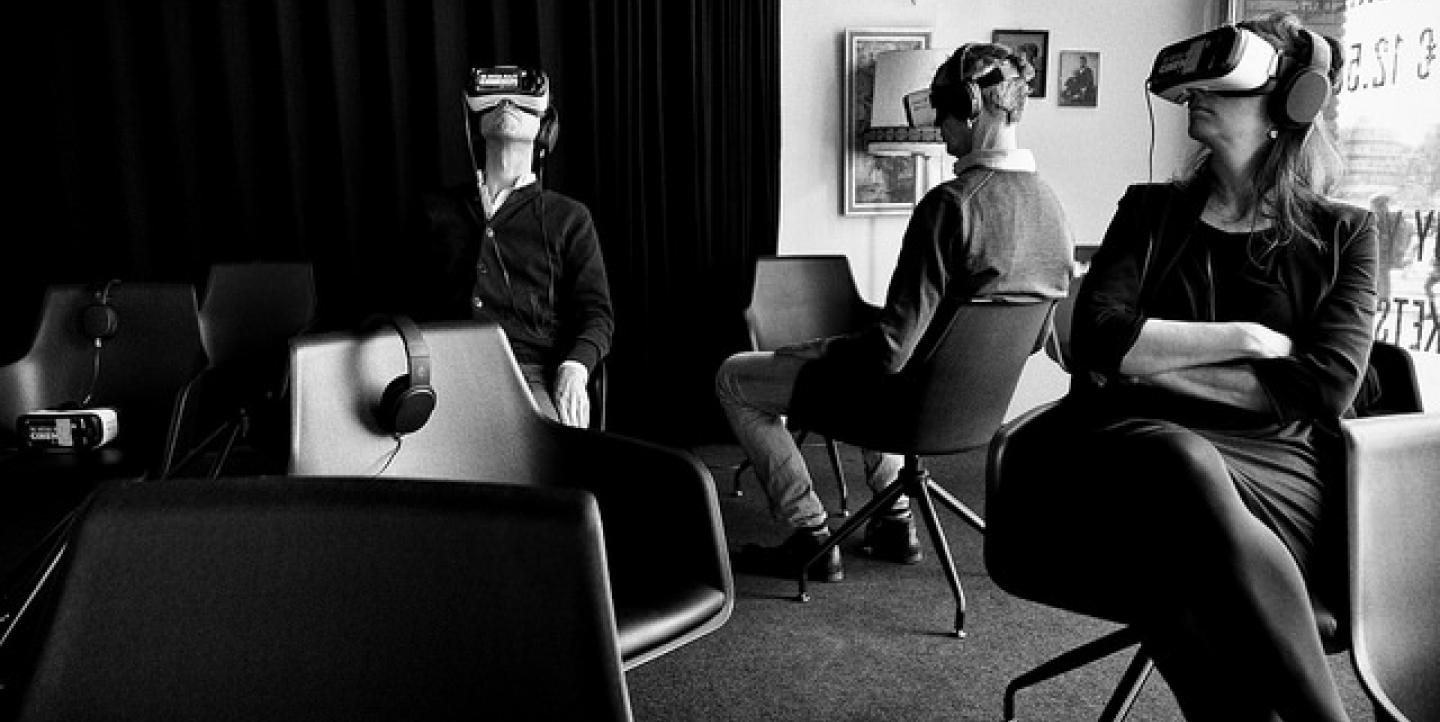The future of video at NBC News isn’t at 30 Rockefeller Plaza — it’s at a co-working space off Union Square.
NBC Left Field, a 12-person experimental video unit, launched last July with a simple but strategically vital mandate: to experiment with new ways of reporting, producing, and delivering video news, with a special focus on the habits and preferences of younger news consumers. It’s one part digital video unit, one part emerging technology incubator.
The unit’s early projects offer a glimpse of what that future might look like. In a recent video about the reality of New Year’s resolutions, Left Field used Tilt Brush, Google’s virtual reality 3D painting technology, to illustrate points in real-time. The video is a follow up to a similar “mixed reality” video that explains the neurological roots of outrage, which was broadcast on Facebook Live. Other videos have recreated the moon landing, tried to recreate the sound of tinnitus, and attempted to spend Jeff Bezos’ fortune.
Matt Danzico, head of Left Field, said that the Tilt Brush video was one of the unit’s most exciting projects so far because it offers a vision of how video producers can use virtual reality to unlock new ways of telling familiar stories. Because the on-screen elements are rendered in real time, they require no post-processing work, letting creators experiment quickly and easily. The New Year’s resolution video, for example, took just five hours to edit. Left Field is already thinking about other applications of the Tilt Brush technology, such as applying it to segments of live news broadcasts.
“We saw what people were already doing with animation and we thought it was all great, but we wanted to think about what animation will look like four years down the road and go there,” said Danzico. “I don’t know if this is the future — none of us do — but it’s part of our mission to try it out.”
But Nick Ascheim, head of digital at NBC News, stressed that Left Field wasn’t developed to experiment for the sake of experimenting. Instead, the unit has a very real mission to help NBC News learn as much as it can about what kinds of video production and delivery resonate with younger news consumers, something that has real implications for the company. Just eight percent of Americans between the ages of 18 and 29 say they often get their news from network television, and only 10 percent get their news from cable.
Ascheim says he’s aware of the challenge. “We know a great deal about how to make linear television and we’ve been doing it a very long time, but there is a generation of people who currently don’t have cable subscriptions, and who won’t have cable subscriptions, that are beginning to form different habits around how they consume news,” he said.
He added that this is why he’s also concerned about the idea of “long-term” experimentation, which implies that direct applications of experiments are still a long way off. “We have to start answering these questions right now. It’s important for us to put some real investment in it, not just in dollars but also in creative energy, to come to an answer.”
Beyond experimenting with new technology, Left Field has also spent a lot of time honing its take on documentary filmmaking, which is built around, as Ascheim puts it, “helping viewers understand the humans around them.” Left Field’s most popular video on YouTube, where it has 24,000 subscribers, focuses on the Proud Boys, a group of men’s rights activists in Texas. Other successful videos have covered human rights abuses in the Philippines, what South Korean teens think of North Koreans, and a Swedish museum for failed inventions. The documentaries are short, well-produced and designed for consumption on YouTube and other video platforms.
Much of what Left Field has done so far would have been harder to pull off if the unit were housed alongside the rest of NBC’s staffers, Danzico argued. Operating out of a coworking space has been a boon to the operation, which benefits from its proximity to other small startups and from being away from the day-to-day bustle of NBC News headquarters. “I can let people go into a room for two straight months and come up with this new and different hardware and a video offering. They would not have had that chance if someone was standing over them and looking at their every move,” he said.
At the same time, Left Field is focused on making sure that its ideas trickle up into the larger NBC News operation. To that end, various NBC departments make almost daily visits to the Left Field offices to discuss projects, share best practices, and figure out how they can work with the Left Field team.
“It’s a two-way street,” said Ascheim. “We want ideas that they’re pioneering to make their way back to both digital and broadcast, but we also want things we’re doing here to filter into what they’re doing there.”
This article first appeared on Nieman Lab. It has been condensed and republished on IJNet with permission.
Main image CC-licensed by Flickr via Guido van Nispen.

